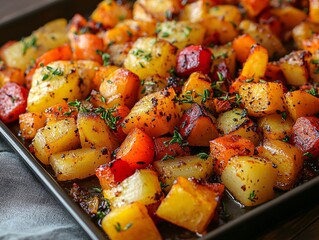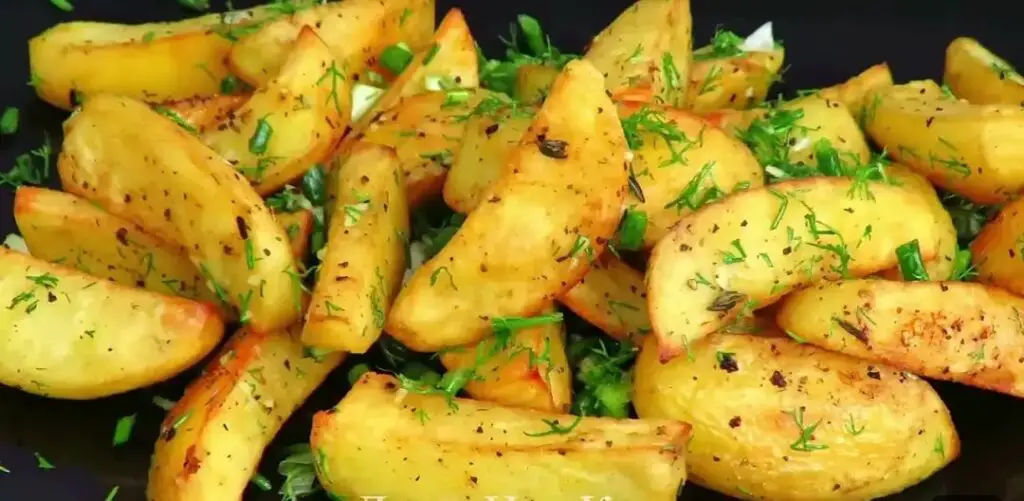
To me, the perfect roast potato has a thick, super crunchy crust, golden, it is fluffy and moist on the inside and perfectly seasoned.
How many times have you gone to the effort of making a spectacular roast dinner?
With rising prices, many mothers struggle to balance the difference between renewing food types and maintaining the household budget. There are a group of items that can be easily renewed by cooking them in innovative and inexpensive ways. There is no doubt that potatoes can be called the “joker” of food, given the possibility of presenting them in many ways that give you a permanent feeling of distinction on your table. If you want to maintain your household budget throughout the month, make potatoes one of the main meals in your day, but in different ways, away from the form of a potato tray or fried and boiled potatoes.
These easy Crispy Roasted Potatoes are the perfect side that everyone will love. Roasted to the perfect consistency we all love!
WHY IT WORKS
- Large chunks of potato maximize the contrast between exterior and interior.
- Parboil all the potatoes, but cut the Russet super finely so it breaks down during parboiling.
- Infusing the oil or fat with garlic and herbs gives the potato crust extra flavor.
- Offering you the choice of oil, duck fat, goose fat, or beef fat means you can get whichever flavor you want.
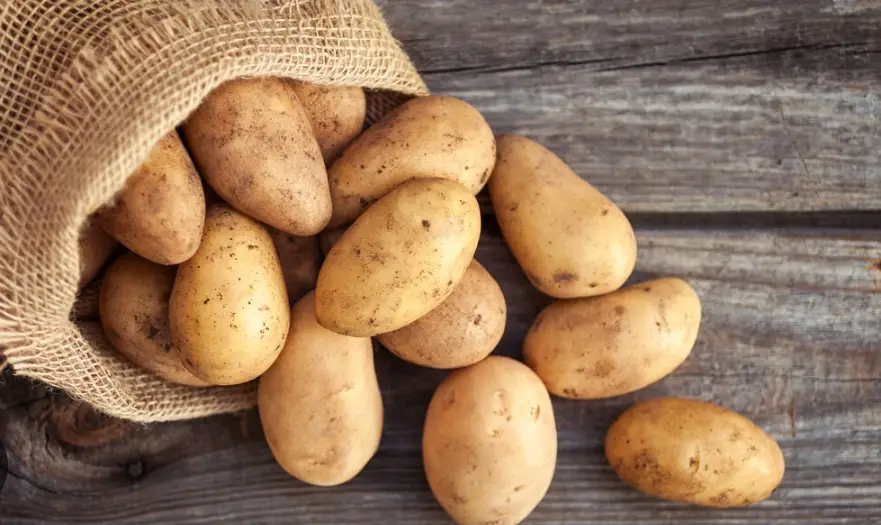
Choosing the Right Potato Size and Variety
First things first: Let’s talk about size. In my original roast-potatoes recipe, I cut the potatoes into smallish, two-inch chunks. This time around, I wanted to maximize the contrast between the center and the exterior even more, so I decided to leave the potatoes in really large chunks. A full quarter of a potato each. That means each chunk turns into a two-biter, but it makes it easier to crisp them up.
For me, the goldilocks size is small-to-medium pieces, 1 ½” wide, no larger than 2” (~4 to 5 cm).
For variety, I tried the three most common supermarket types: russet, Yukon Gold, and red.
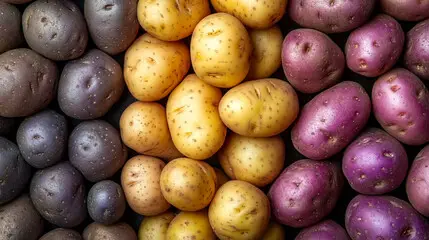
Why You’ll Love Crispy Roasted Potatoes
- Addictive: Highly addictive so you will become an expert at making them very quickly
- Crisp (but Soft): These crispy oven potatoes are both crispy & soft – double the trouble!
- Gourmet: They make you feel gourmet AF, they’re so fancy but not.
Which kind of potatoes are best for roasting?
To me, there’s one potato that’s the best for roasting: Yukon Gold potatoes. They have a lower starch content and a higher sugar content than other potatoes, which helps create a roasted potato with a crispy golden exterior and a soft and creamy center. They also have thin skin with not too many eyes, which makes them easier to peel than something like a Russet potato.
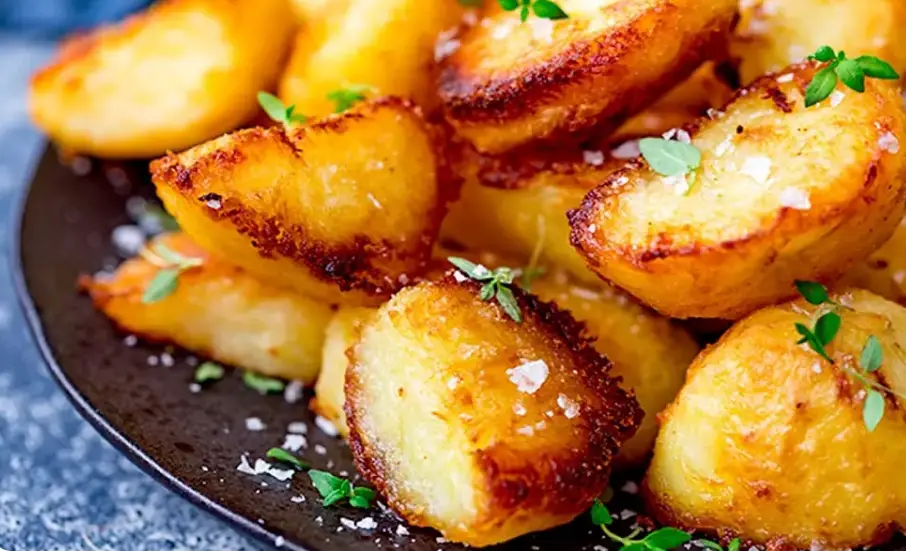
Best Oil to Use
We like using an avocado oil because it can withstand high heat, but is also mild in flavor. You can really use any high smoke point oil for this recipe such as safflower oil, canola oil, or canola oil.
How to Roast Potatoes
1) Preheat to 425 degrees Fahrenheit.
This is my go-to temperature for roasting vegetables, and it proved perfect for potatoes. It’s high enough to yield tender potatoes that are nicely caramelized on the edges, but not so high that the oil burns.
2) Slice the potatoes into even 2-inch chunks.
Two-inch chunks are rather large, probably larger than you’re accustomed to slicing vegetables for roasting. Your pan might look a little bare, but all for good reason!
At this size, the potatoes get plenty of breathing room so they roast instead of steam. Plus they have ample surface area to turn golden. Lastly, the chunks are big enough to offer contrast between the creamy interiors and the crisp exteriors—something you’ll miss if you slice them any smaller.
3) Toss with olive oil, garlic powder, salt and optional rosemary.
We’ll use less olive oil than you might think necessary. I promise it’s enough to coat the potatoes if you keep tossing. When I used more than one tablespoon oil, the excess oil turned a little smoky in the oven.
We’ll add garlic powder for some subtle but irresistible flavor and salt because it brings out the potatoes’ best. Lastly, I highly recommend stirring in some finely chopped fresh rosemary if you have it. While the potatoes bake, the rosemary simmers in the hot oil and infuses the dish with herbal notes.
4) Roast for 40 to 45 minutes, tossing halfway.
First, make sure to arrange the potatoes in an even layer with their flat sides flush against the pan so they can turn golden. Roast for 40 t0 45 minutes, stirring halfway, until the potatoes are deeply golden on the undersides and a little shrunken and pillowy. Now we’re talking!
5) Season with optional fresh parsley, salt and pepper.
Fresh parsley offers some enticing green color and some light flavor. Sprinkle a little more salt and some pepper all over, then stir to help the parsley stick. Serve while warm.
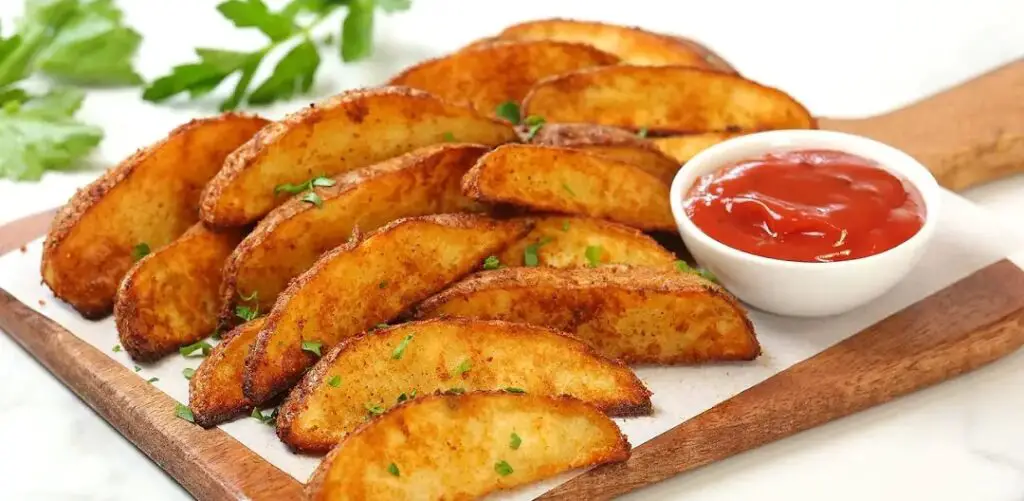
Crispy Roast Potatoes Ever
Course: Others4-6
servings10
minutes30
minutes283
kcalGolden and crunchy on the outside, and light and fluffy on the inside. It’s not difficult to achieve, but there are a few little tricks to get it right. I created this recipe using healthy oil so people could serve them all the time without feeling guilty. An important thing to note with roasting potatoes is that they crisp up best without anything else in the oven (like a roast) creating moisture – so I do these potatoes while the meat is resting. You also need to start with the right potato – Agria is my favourite, but you can also use Ilam Hardy, Red Rascal, Fianna, Victoria, Laura, and Marabel…stay away from waxy potatoes!
Ingredients
2 pounds Yukon gold potatoes and/or red potatoes, scrubbed clean
1 tablespoon extra virgin olive oil
1 teaspoon garlic powder
¼ teaspoon fine salt
Optional: 1 tablespoon finely snipped rosemary (from about 3 sprigs)
Optional garnish: 2 teaspoons finely chopped fresh parsley
Freshly ground black pepper, to taste
Directions
- Preheat the oven to 425 degrees Fahrenheit with a rack in the middle of the oven. Line a large, rimmed baking sheet with parchment paper to prevent the potatoes from sticking.
- Slice the potatoes into 2-inch chunks (slice small potatoes in half, larger potatoes into quarters, and so on). Place them on the prepared baking sheet.
- Drizzle the olive oil over the potatoes, then sprinkle on the garlic powder, salt, and rosemary, if using. Toss with your hands until the potatoes are evenly coated in the mixture (it might seem like you don’t have enough oil, but you do—keep going!). Arrange the potatoes in an even layer across the pan with their flat edges against the pan.
- Roast the potatoes for 40 to 45 minutes, stirring halfway, until the potatoes are deeply golden (check the undersides) and easily pierced through by a fork. Stir in the parsley, if using, and season to taste with additional salt and some black pepper (careful, the potatoes are hot). Serve promptly.
